Why you can trust Tom's Hardware
Advanced Transient Response Tests
For details about our transient response testing, please click here.
In the real world, power supplies are always working with loads that change. It's of immense importance, then, for the PSU to keep its rails within the ATX specification's defined ranges. The smaller the deviations, the more stable your PC will be with less stress applied to its components.
We should note that the ATX spec requires capacitive loading during the transient rests, but in our methodology, we also choose to apply a worst case scenario with no additional capacitance on the rails.
Advanced Transient Response at 20% – 20ms
| Voltage | Before | After | Change | Pass/Fail |
|---|---|---|---|---|
| 12V | 12.210V | 11.981V | 1.88% | Pass |
| 5V | 5.035V | 4.892V | 2.84% | Pass |
| 3.3V | 3.353V | 3.126V | 6.77% | Fail |
| 5VSB | 5.122V | 5.074V | 0.94% | Pass |
Advanced Transient Response at 20% – 10ms
| Voltage | Before | After | Change | Pass/Fail |
|---|---|---|---|---|
| 12V | 12.223V | 11.995V | 1.87% | Pass |
| 5V | 5.025V | 4.855V | 3.38% | Pass |
| 3.3V | 3.352V | 3.139V | 6.35% | Fail |
| 5VSB | 5.122V | 5.058V | 1.25% | Pass |
Advanced Transient Response at 20% – 1ms
| Voltage | Before | After | Change | Pass/Fail |
|---|---|---|---|---|
| 12V | 12.220V | 11.976V | 2.00% | Pass |
| 5V | 5.027V | 4.882V | 2.88% | Pass |
| 3.3V | 3.353V | 3.105V | 7.40% | Fail |
| 5VSB | 5.122V | 5.069V | 1.03% | Pass |
Advanced Transient Response at 50% – 20ms
| Voltage | Before | After | Change | Pass/Fail |
|---|---|---|---|---|
| 12V | 12.117V | 11.898V | 1.81% | Pass |
| 5V | 5.012V | 4.868V | 2.87% | Pass |
| 3.3V | 3.313V | 3.055V | 7.79% | Fail |
| 5VSB | 5.066V | 5.021V | 0.89% | Pass |
Advanced Transient Response at 50% – 10ms
| Voltage | Before | After | Change | Pass/Fail |
|---|---|---|---|---|
| 12V | 12.137V | 11.908V | 1.89% | Pass |
| 5V | 4.995V | 4.842V | 3.06% | Pass |
| 3.3V | 3.313V | 3.076V | 7.15% | Fail |
| 5VSB | 5.068V | 4.980V | 1.74% | Pass |
Advanced Transient Response at 50% – 1ms
| Voltage | Before | After | Change | Pass/Fail |
|---|---|---|---|---|
| 12V | 12.133V | 11.847V | 2.36% | Pass |
| 5V | 4.999V | 4.834V | 3.30% | Pass |
| 3.3V | 3.313V | 3.127V | 5.61% | Fail |
| 5VSB | 5.067V | 4.968V | 1.95% | Pass |
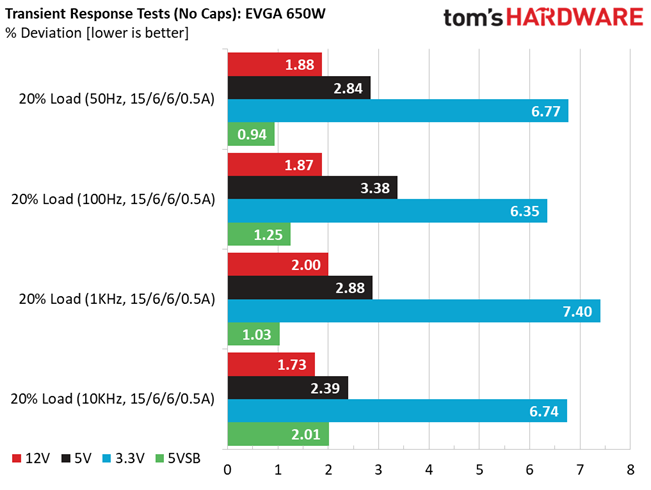
Results 25-29: Transient Response
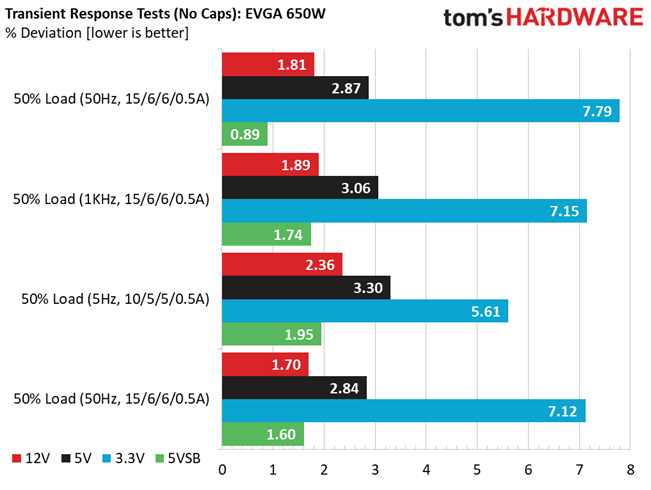

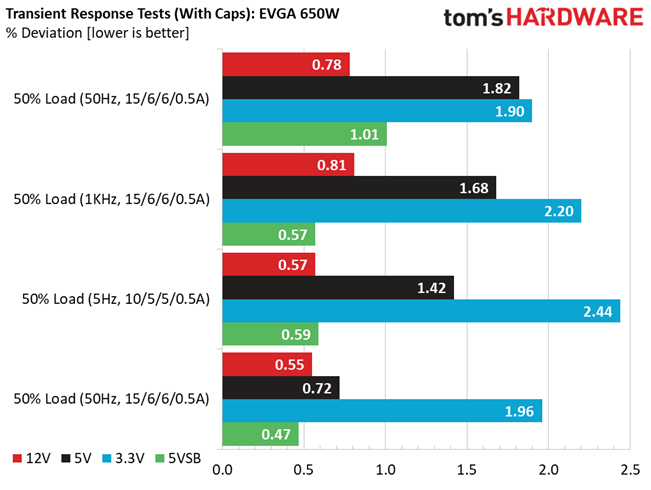
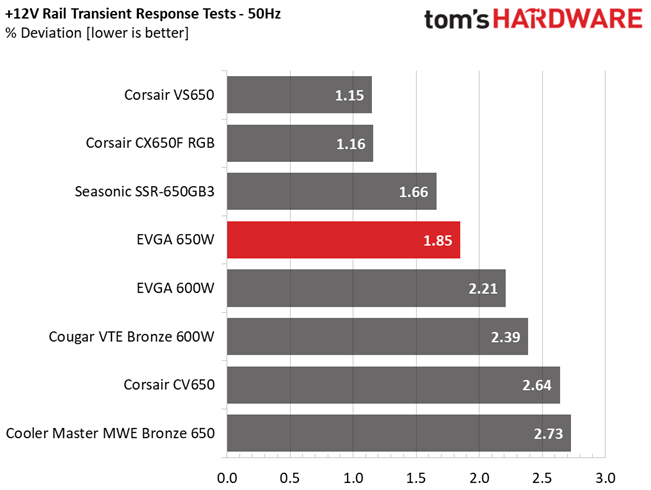

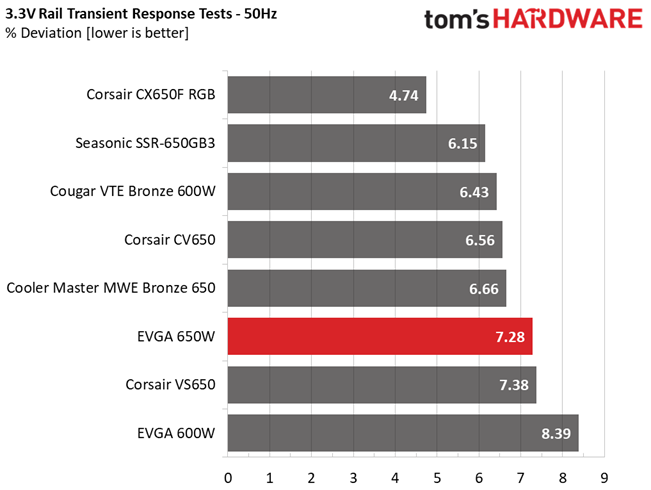

Transient response is decent at 12V, for this price range, and quite good at 5V and 5VSB. At 3.3V, it is terrible, though.
Turn-On Transient Tests
In the next set of tests, we measure the PSU's response in simpler transient load scenarios—during its power-on phase. Ideally, we don't want to see any voltage overshoots or spikes since those put a lot of stress on the DC-DC converters of installed components.

Turn-On Transient Response Scope Shots
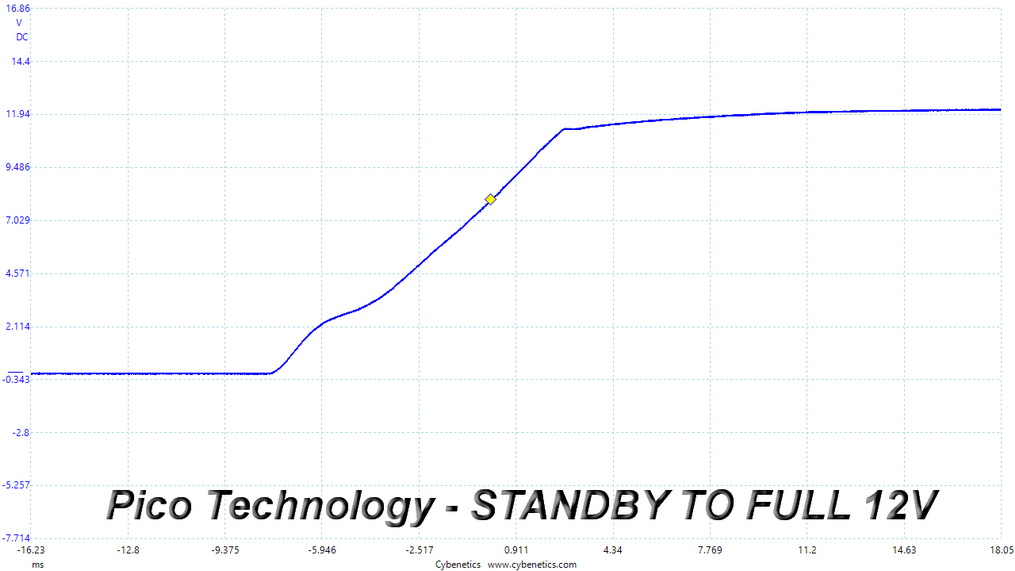

The spike at 5VSB reaches 5.382V, so it is lower than the maximum (5.5V). The 12V rail behaves better in the next two tests.
Power Supply Timing Tests
There are several signals generated by the power supply, which need to be within specified, by the ATX spec, ranges. If they are not, there can be compatibility issues with other system parts, especially mainboards. From year 2020, the PSU's Power-on time (T1) has to be lower than 150ms and the PWR_OK delay (T3) from 100 to 150ms, to be compatible with the Alternative Sleep Mode.
Get Tom's Hardware's best news and in-depth reviews, straight to your inbox.
| T1 (Power-on time) & T3 (PWR_OK delay) | ||
|---|---|---|
| Load | T1 | T3 |
| 20% | 51ms | 270ms |
| 100% | 51ms | 270ms |
The PWR_OK delay is out of the 100-150ms region, so the PSU does not support the alternative sleep mode. It would be a huge surprise if it did! The Power-on Time is low enough to retain compatibility with all mainboards.
Ripple Measurements
Ripple represents the AC fluctuations (periodic) and noise (random) found in the PSU's DC rails. This phenomenon significantly decreases the capacitors' lifespan because it causes them to run hotter. A 10-degree Celsius increase can cut into a cap's useful life by 50%. Ripple also plays an important role in overall system stability, especially when overclocking is involved.
The ripple limits, according to the ATX specification, are 120mV (+12V) and 50mV (5V, 3.3V, and 5VSB).
| Test | 12V | 5V | 3.3V | 5VSB | Pass/Fail |
| 10% Load | 12.4 mV | 15.7 mV | 11.6 mV | 9.4 mV | Pass |
| 20% Load | 14.0 mV | 16.0 mV | 12.4 mV | 8.1 mV | Pass |
| 30% Load | 16.5 mV | 15.4 mV | 12.3 mV | 9.0 mV | Pass |
| 40% Load | 17.0 mV | 17.1 mV | 13.6 mV | 11.0 mV | Pass |
| 50% Load | 20.9 mV | 19.6 mV | 14.7 mV | 13.3 mV | Pass |
| 60% Load | 23.1 mV | 19.9 mV | 15.0 mV | 18.3 mV | Pass |
| 70% Load | 25.9 mV | 21.1 mV | 15.7 mV | 17.1 mV | Pass |
| 80% Load | 32.2 mV | 23.0 mV | 23.8 mV | 19.0 mV | Pass |
| 90% Load | 38.7 mV | 22.5 mV | 24.7 mV | 18.5 mV | Pass |
| 100% Load | 56.3 mV | 28.3 mV | 25.7 mV | 16.6 mV | Pass |
| 110% Load | 63.9 mV | 28.4 mV | 25.6 mV | 16.9 mV | Pass |
| Crossload 1 | 28.9 mV | 53.5 mV | 32.6 mV | 17.7 mV | Fail |
| Crossload 2 | 63.6 mV | 23.8 mV | 18.2 mV | 9.5 mV | Pass |
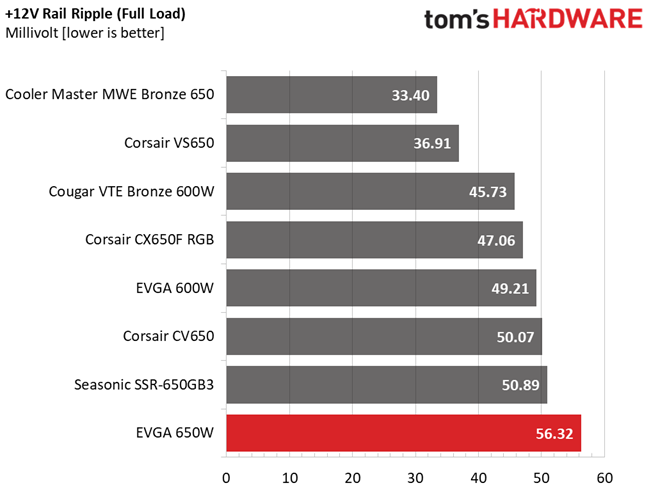

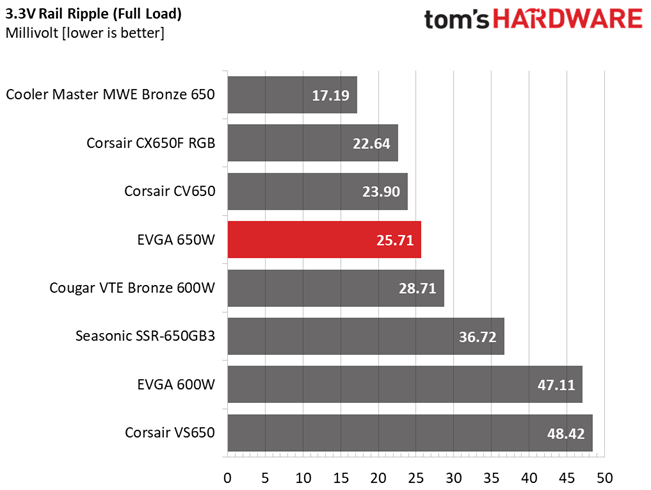
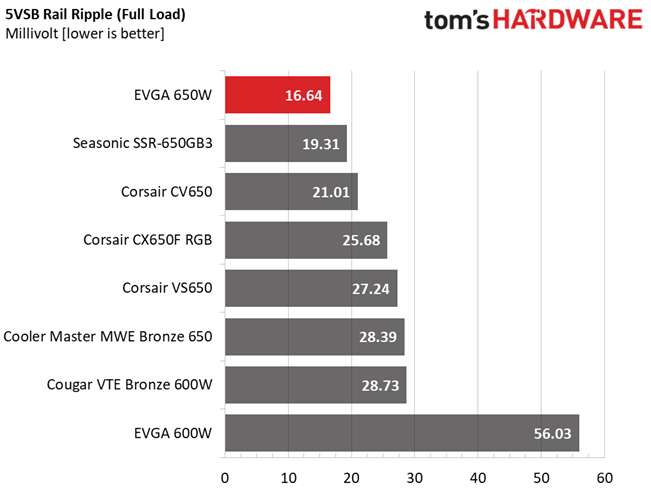
Ripple gets high at 12V with full and 110% load, at increased operating temperatures. In the other normal tests, it is low enough. During the CL1 test, where the load is low at 12V and high on the minor rails, the 5V rail's ripple goes above the limit. Group regulated PSUs don't perform well with unbalanced loads.
Ripple At Full Load
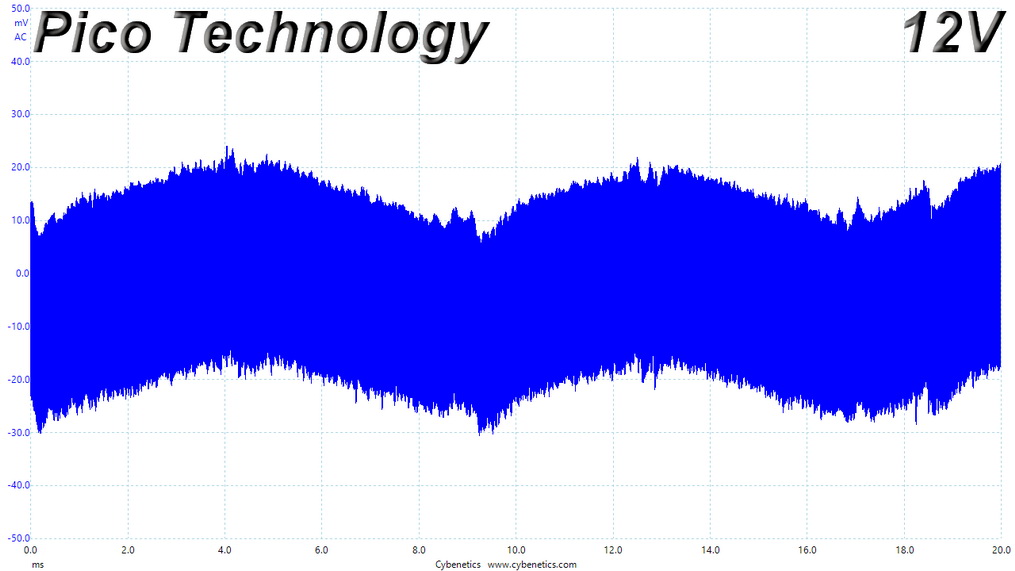
Ripple Full Load Scope Shots

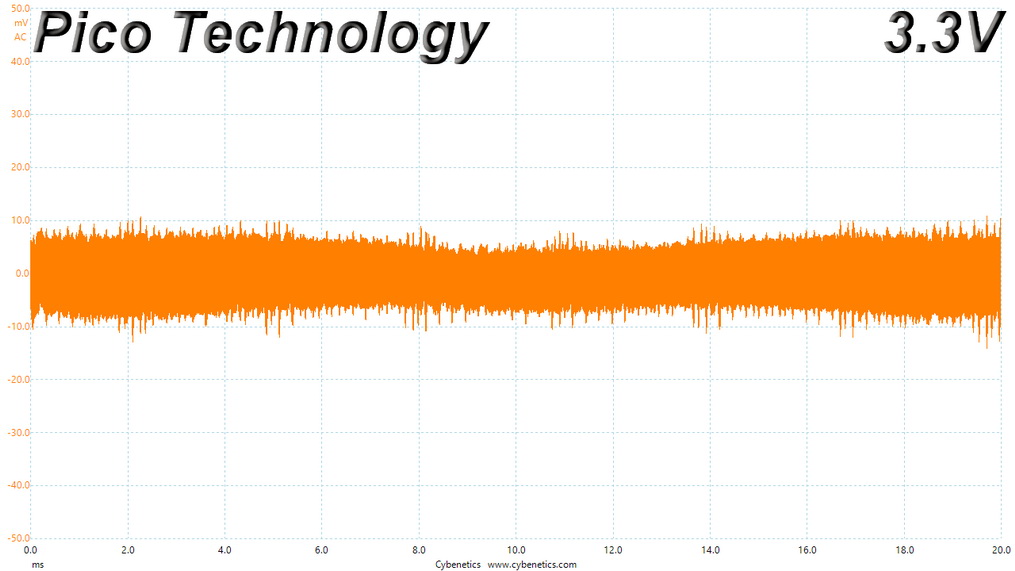
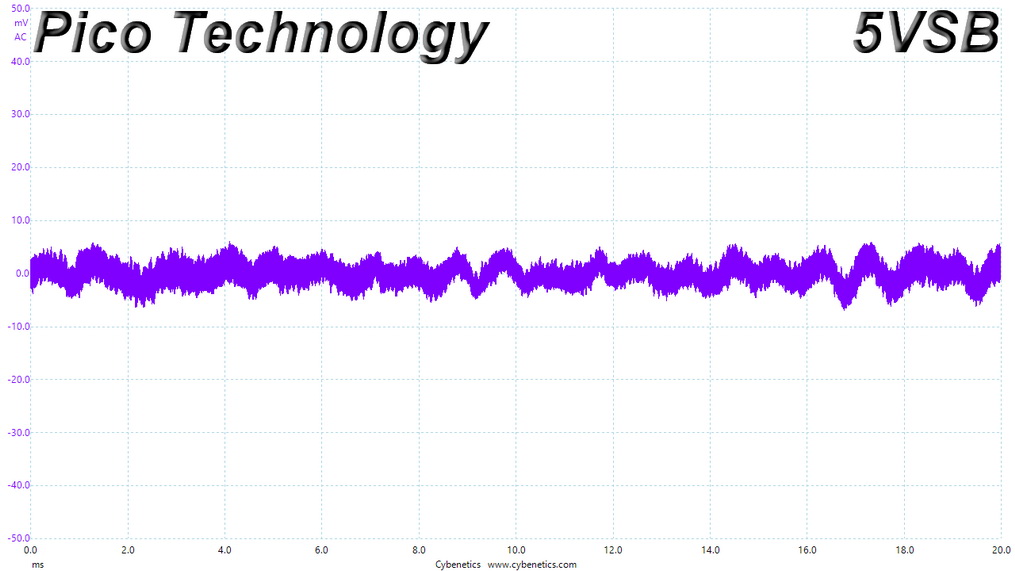
Ripple At 110% Load
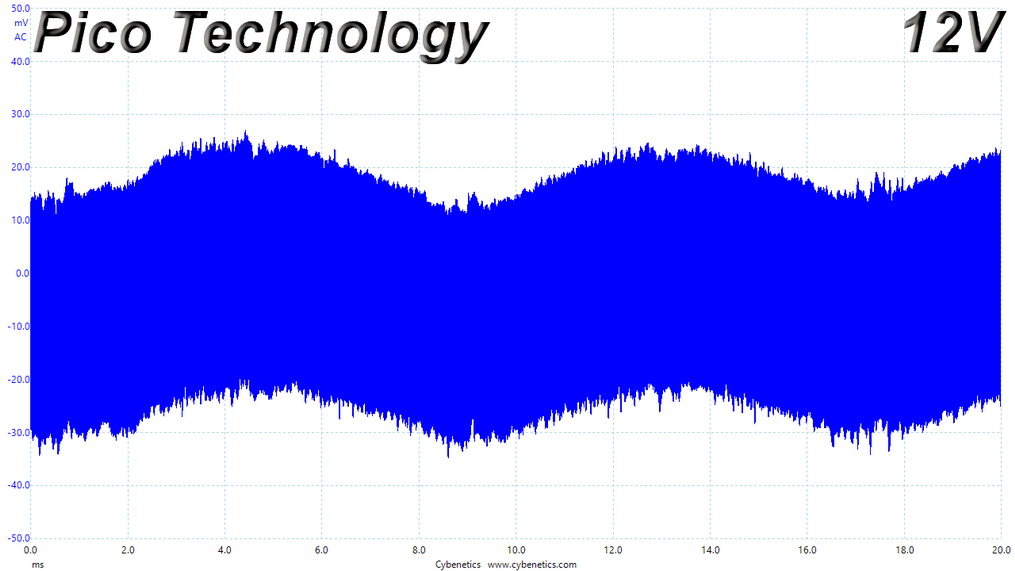
Ripple 110% Load Scope Shots


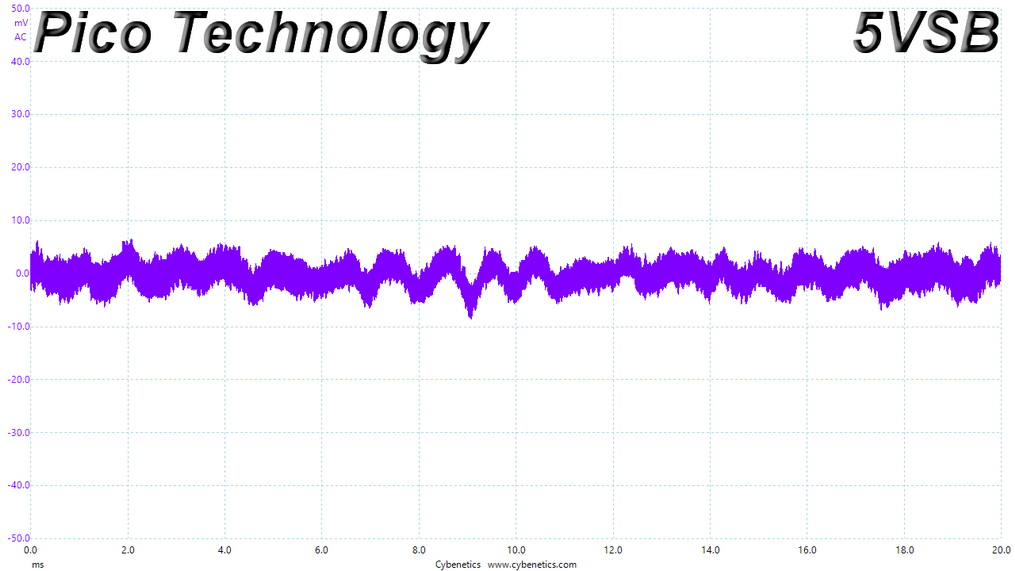
Ripple At Cross-Load 1
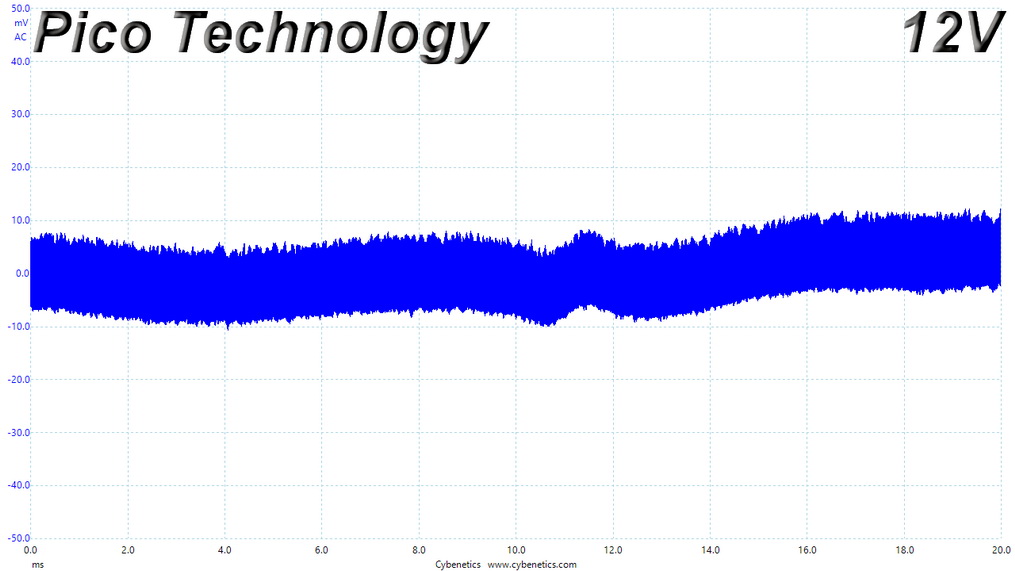
Ripple CL1 Load Scope Shots
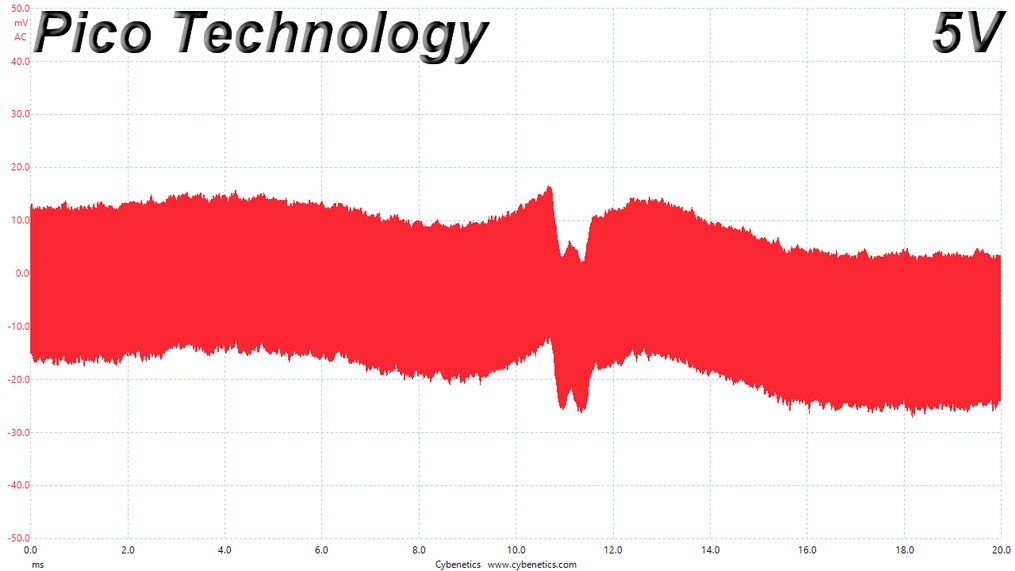
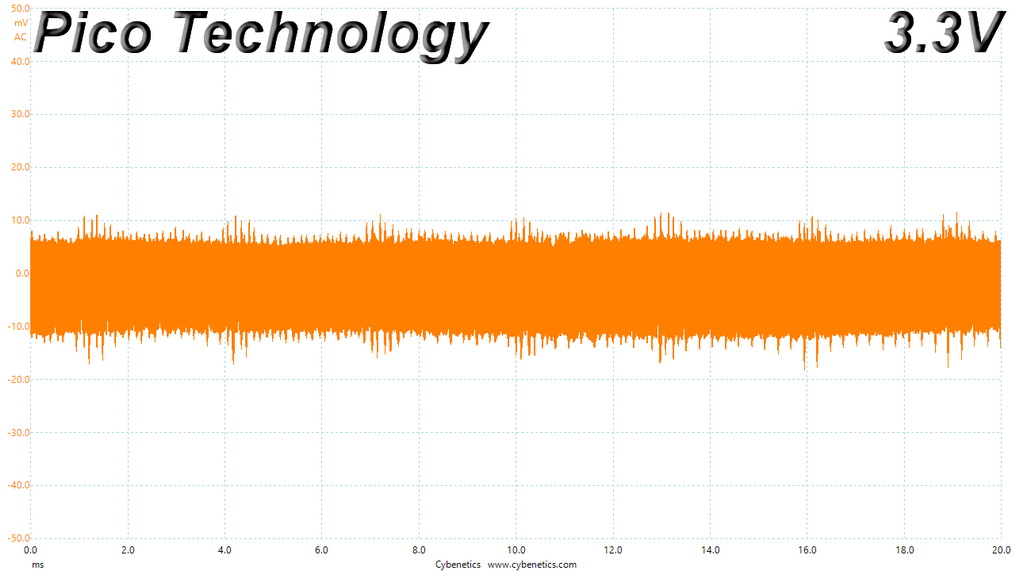
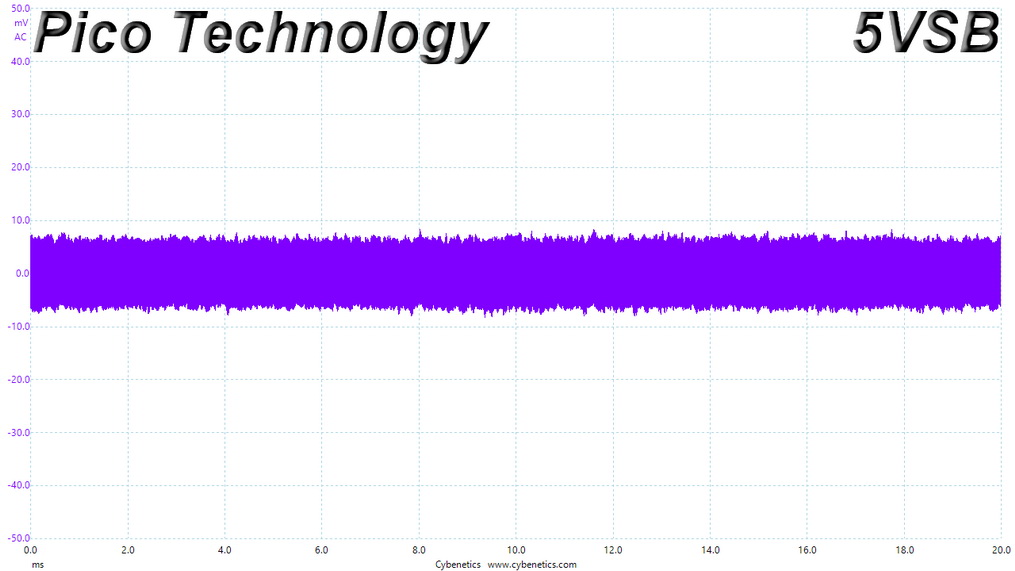
Ripple At Cross-Load 2
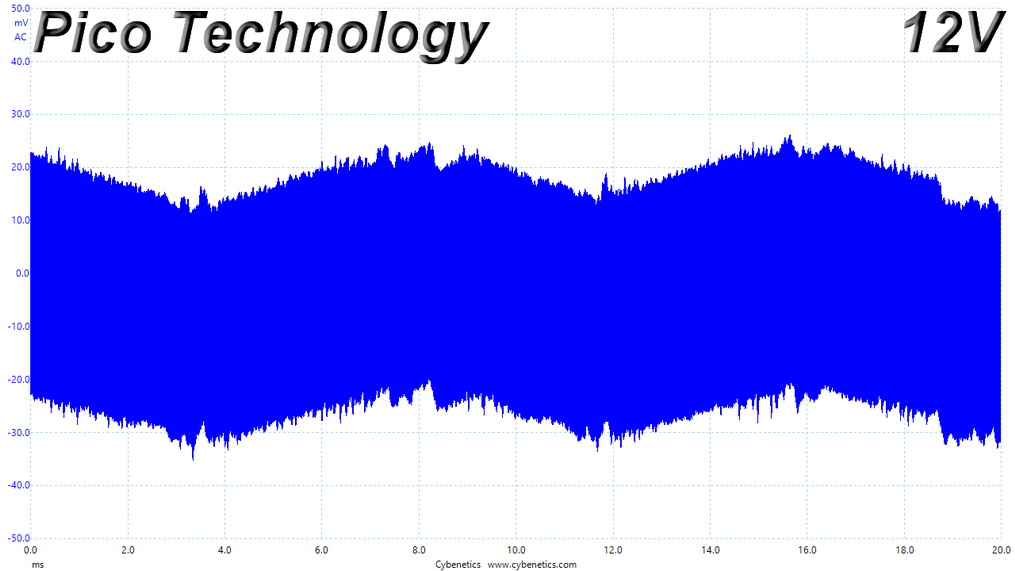
Ripple CL2 Load Scope Shots

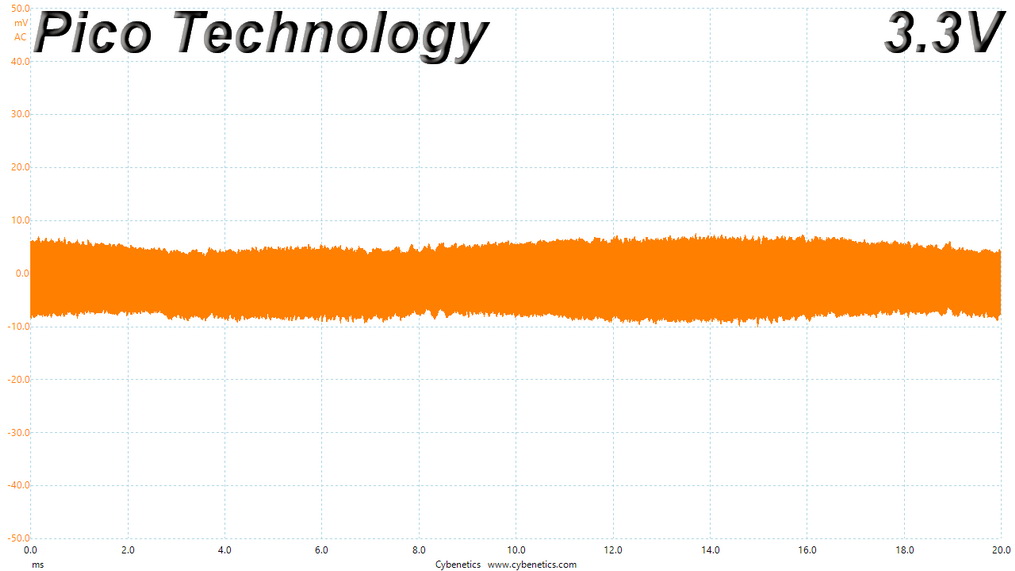
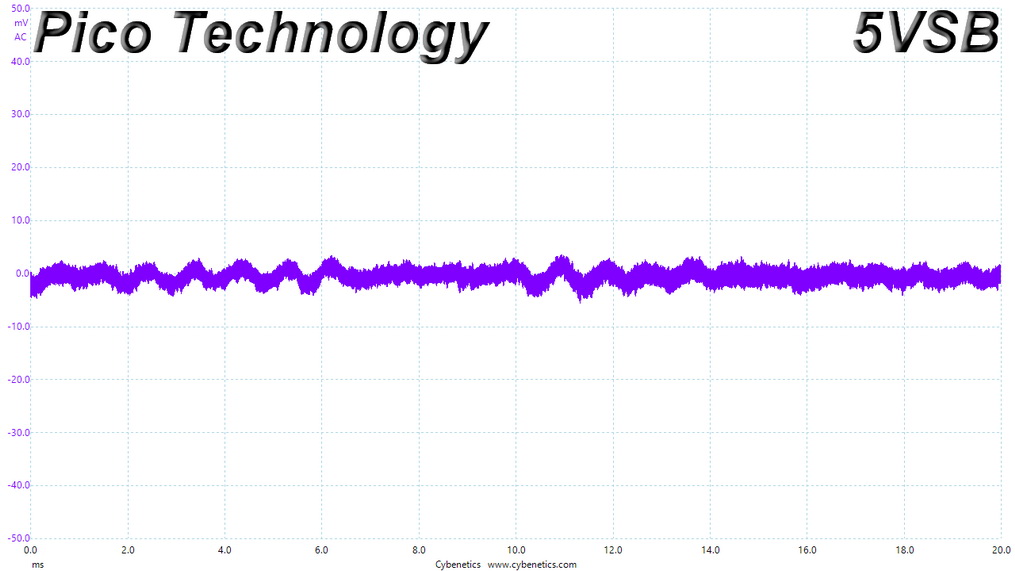
EMC Pre-Compliance Testing – Average & Quasi-Peak EMI Detector Results
Electromagnetic Compatibility (EMC) is the ability of a device to operate properly in its environment without disrupting the proper operation of other nearby devices.
Electromagnetic Interference (EMI) stands for the electromagnetic energy a device emits, and it can cause problems in other nearby devices if too high. For example, it can be the cause of increased static noise in your headphones or/and speakers.
It's been quite long since the last time we saw such high EMI emissions on a PSU. The unit's EMI filter needs fixing.
MORE: Best Power Supplies
MORE: How We Test Power Supplies
MORE: All Power Supply Content
Current page: Transient Response Tests, Timing Tests, Ripple Measurements and EMC Pre-Compliance Testing
Prev Page Protection Features, DC Power Sequencing, Cross-Load Tests and Infrared Images Next Page Performance, Noise, Efficiency and Power Factor
Aris Mpitziopoulos is a contributing editor at Tom's Hardware, covering PSUs.
-
Archaic59 Just another POS on the endless pile that we have to warn people about. Who could even use it? It's not for a gaming system and how many people really need 650 watts in a home office system? I remember when I used to recommend EVGA power supplies regularly. Yeah, the Super Flower days, which are long gone. RIP EVGA.Reply -
DSzymborski In fairness, even when EVGA had PSUs made by Super Flower and SeaSonic, the N series still totally sucked then as well.Reply -
maxamillionfeettall "EVGA states that the PSU's fan has a sleeve bearing, but I broke it apart and found an inferior rifle bearing."Reply
Rifle bearing is just a modified sleeve bearing and is superior to plain sleeve bearings iirc. It's even stated in the psu 101 article, so idk why it's stated as inferior to plain sleeve bearing this time around.
